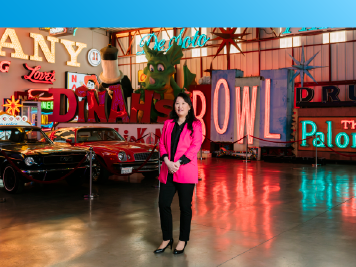Balancing innovation with risk
For the engineering team, building Axiom Station, or any other space-going hardware, means identifying and mitigating thousands of potential risks, both obvious and obscure. What happens if micro-meteorites hit the station, radiation zaps a computer, or the platform loses power? What constitutes a manageable vs. catastrophic risk, and what measures must the team take to mitigate the first and eliminate the second?
“There are several ways we can control risk,” says Motter. “We can make a part so robust it just can’t break, but then we’re probably making something that’s complex, heavy, and expensive. We can duplicate parts, creating redundancies, or we can carefully consider where to place the part so it’s at less risk.”
Sometimes, the team combines strategies, such as placing duplicate parts in different parts of the station. One area might face greater risk of encountering micrometeorites or solar radiation. The latter can play havoc on computer systems, turning them into expensive bricks.
One approach is to simply shield the station’s computers so nothing harmful can get through. But again, this adds weight and expense. The more efficient strategy is to make the computers more resilient, so that if something goes wrong, they can be quickly rebooted, just like any consumer model.
The engineers mix and match shielding, redundancy, and placement to create the most cost-effective and safe systems. The process requires continuous testing and iteration, looking at how each part responds to vacuum, vibration, radiation, and temperature extremes.
“We’ll take it colder or hotter than it’ll ever see in practice,” says Motter. “Sometimes, we test how hot it will go before failing. By understanding those bounds, we can assure ourselves the parts will survive and keep running.”
Robust business insurance coverage helps make emerging innovation possible. Complex missions and equipment can be challenging to insure, but the market has always been willing to underwrite all types of companies and risks, says Patton Kline, Aviation & Space, managing director at Marsh, New York.
“Insurance is a key enabler for the space industry and overall space economy. Space policies are designed to cover the technical risk from launch through the satellite lifetime,” Kline says.
The space flight ecosystem
Fifty years ago, there were two main players in space: NASA and its Soviet counterpart. Now, the ecosystem includes Axiom Space and several other private companies. There’s a lot of cross-pollination within this ecosystem. NASA continues to provide insights and leadership, but commercial partners are always evolving new approaches.
Axiom Space has built a melting pot of expertise. Before his current position, Motter spent more than a decade at Space X. Many of his colleagues today have joined from similar corporate startups and government agencies.
“One thing that brought me to Axiom Space is the way we are merging traditional and contemporary aerospace,” says Motter. “Traditional efforts tend to move more deliberately and focus on intensive design. Now, we’re trying to think more agilely and quickly, iteratively testing as we advance these systems. We’re merging that quick and agile with older processes to come up with the best of both worlds.”
Fast and agile are critically important because the Axiom Station has a clear deadline: The ISS is scheduled to be decommissioned in 2030.
“My job is to build an awesome station within a reasonable budget and within time,” says Motter. “We’ve got to launch before the end of the ISS. But at the same time, we need to reduce the risks as much as possible. We’re not rushing, but we’re not resting either.”
A new generation of space station
Axiom Station will be the next step in the long progression from the spartan living arrangements on the ISS, and its predecessors to the officers’ quarters in the Starship Enterprise. Don’t expect to book a luxury suite in space anytime soon, but comfort will be far more than an afterthought.
One unique component will be the Axiom Earth Observatory, a conical section nestled on the module’s Earth-side (top and bottom have no meaning in space), offering a panoramic view of the home planet and surrounding space and providing crewmembers a place for observation and reflection.
The observatory is one of many features being incorporated into Axiom Station. The idea is to create an environment that offers something approaching true work-life balance. On the ISS, crewmembers rest in tiny, closet-sized rooms. Their sleeping bags are tethered to the walls, so people don’t randomly float around the station—a disorienting experience to wake up to.
The Axiom Station quarters are being designed with a little more area, offering private places where off-duty crew can read, call family, and get some good sleep. The goal is to create a place where station residents can relax at the end of their long workdays.
“Our goal is to make space both more functional and more enjoyable,” says Motter. “It won’t be quite like a hotel, but the crew will be able to have more opportunities to enjoy their off time. The ISS and past stations have been geared more toward functionality, and we wanted to nudge the needle a bit more towards comfort.”
A new and improved space suit
While Axiom Station will be the home base, there will be times when crewmembers will perform extravehicular activities to conduct maintenance and perhaps other tasks. Current spacesuits were mostly designed in the 1980s and have been needing improvement.
Axiom Space has been working closely with NASA to develop the Axiom Extravehicular Mobility Unit, the next-generation spacesuit Axiom Station crewmembers and NASA Artemis moon mission astronauts will all wear.



